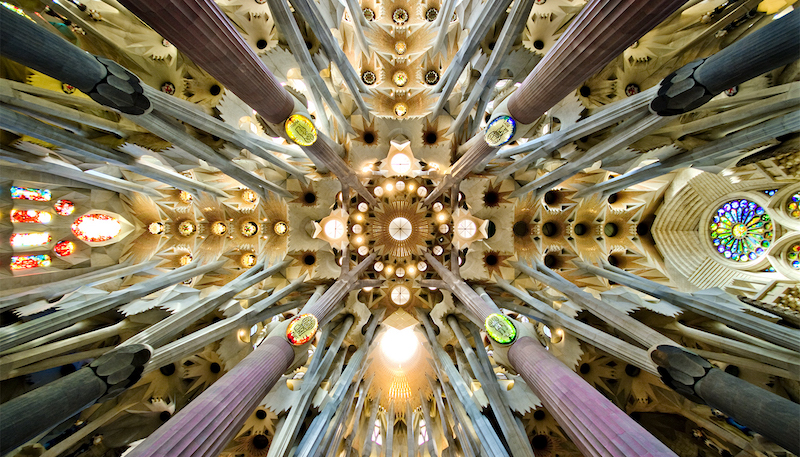It is said that travel broadens the mind, and beginning in 2017 the American Institute of Architects (AIA) is offering a new global travel program specifically focused on broadening the architectural mind.
Architectural Adventures, as the program has been dubbed, will offer small-group trips tailored for the discovery and appreciation of architecture. Every Architectural Adventures tour will feature subject-matter experts, hand-picked by the AIA, to guide travelers and enliven their awareness of the world’s architecture. The tour guides will offer an up-close view of not just the iconic landmarks and buildings in the various cities, but also an explanation of how the historical, political and cultural events helped shape the cityscapes.
Architectural Adventures provides individuals with the opportunity to participate in special excursions, gain exclusive behind-the-scenes access, and get insider knowledge to popular sights as well as lesser-known, yet equally fascinating architecture.
2017 destinations and highlights are listed below:
- Havana: In March, set forth on a six-day immersion in the Cuban capital that spans from Old Havana and the 16th century stone fort that guards Havana Bay to the city’s early twentieth-century Art Deco wonders and its most prominent contemporary projects.
- Barcelona: In March, discover Antoni Gaudí’s Modernist marvels and see the city’s medieval Gothic Quarter.
- Chicago: In April, explore the varied works of Frank Lloyd Wright and see why Chicago is known as the first city of American architecture.
- Lisbon to London: In April, cruise Europe’s Atlantic coast, stopping to see its most spectacular sites and structures, like the Frank Gehry-designed Guggenheim Museum in Bilbao, Spain and France’s Mont Saint-Michel.
- Northern Italy: In May, immerse yourself in the Renaissance world of Andrea Palladio and visit Venice for an exclusive tour of St. Mark’s Basilica.
- Cities of the Baltic Sea: In June, sail from Copenhagen to Gdansk to Tallinn to St. Petersburg to Helsinki to Stockholm, stopping to see the Baltic’s grandest designs.
- Along the Danube: In June, experience Central Europe’s signature cities, including Prague, Vienna, Bratislava, and Budapest.
- London: In July, wander London’s charming back streets and towering triumphs like Westminster Abbey and St. Paul’s Cathedral.
- Portugal and Northern Spain: In October, take an epic 17-day journey from Lisbon to Barcelona by way of the seminal cities of the Spanish Pyrenees.
- China: In October, spend two weeks exploring Chinese culture and design in Beijing, Pingyao, Hangzhou, and Shanghai.
Accommodations, most meals, tour transportation, and logistical details of the trip are included in the tours. For more details on booking availabilities and new trip announcements visit architecturaladventures.org.
Related Stories
| Dec 28, 2014
10 key design interventions for a healthier, happier, and more productive workplace
Numerous studies and mountains of evidence confirm what common sense has long suggested: healthy, happier workers are more productive, more likely to collaborate with colleagues, and more likely to innovate in ways that benefit the bottom line, writes Gensler's Kirsten Ritchie.
| Dec 28, 2014
7 fresh retail design strategies
Generic ‘boxes’ and indifferent service won’t cut it with today’s savvy shoppers. Retailers are seeking a technology-rich-but-handmade vibe, plus greater speed to market and adaptability.
| Dec 28, 2014
Workplace design trends: Make way for the Millennials
Driven by changing work styles, mobile technology, and the growing presence of Millennials, today’s workplaces are changing, mostly for the better. We examine the top office design trends.
| Dec 28, 2014
AIA: Commercial glass façade and door systems
When it comes to selecting fenestration systems—particularly glass facades and door systems—a number of factors come into play, requiring a thorough evaluation of a project’s individual requirements.
| Dec 28, 2014
10 essential habits of successful architects
Want to take the next step as a design processional? John Gresko, Senior Project Architect with HDR, explores the traits that many great architects possess.
| Dec 28, 2014
10 unglamorous things architects do
An acquaintance recently asked me about the kinds of things I did on a day-to-day basis at work, anticipating a response loaded with enviable activities. She was wrong, writes HDR's John Gresko.
| Dec 28, 2014
New trends in ceiling designs and materials [AIA course]
A broad array of new and improved ceiling products offers designers everything from superior acoustics and closed-loop, recycled content to eased integration with lighting systems, HVAC diffusers, fire sprinkler heads, and other overhead problems. This course describes how Building Teams are exploring ways to go beyond the treatment of ceilings as white, monolithic planes.
| Dec 27, 2014
7 ways to enhance workplace mobility
The open work environment has allowed owners to house more employees in smaller spaces, minimizing the required real estate and capital costs. But, what about all of their wireless devices?
| Dec 27, 2014
'Core-first' construction technique cuts costs, saves time on NYC high-rise project
When Plaza Construction first introduced the concept of "core first" in managing the construction of a major office building, the procedure of pouring concrete prior to erecting a steel frame had never been done in New York City.
| Dec 23, 2014
5 tech trends transforming BIM/VDC
From energy modeling on the fly to prefabrication of building systems, these advancements are potential game changers for AEC firms that are serious about building information modeling.

















